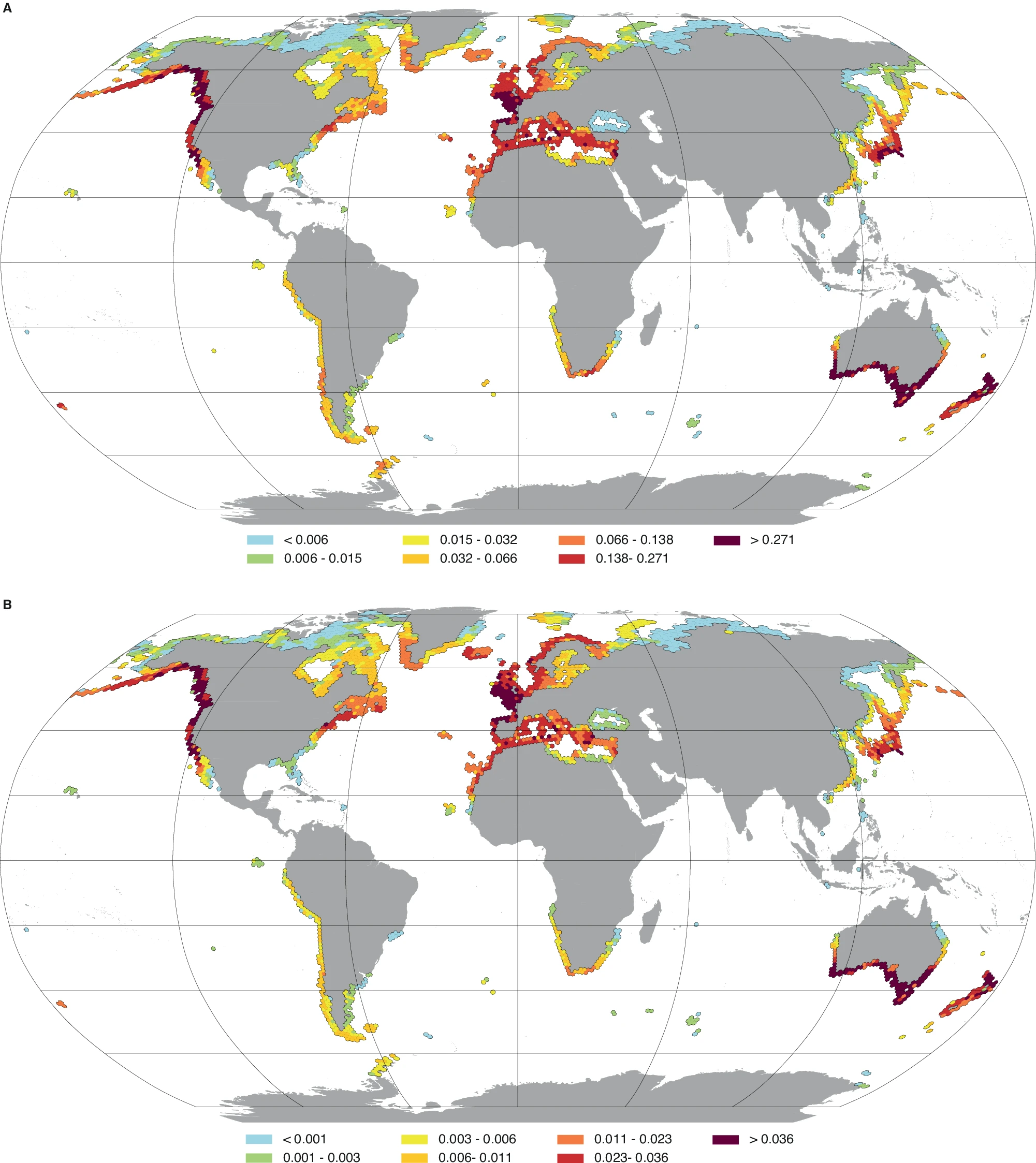Marine forests, often called the “rainforests of the sea,” are vital ecosystems, but how do we effectively protect their evolutionary potential against a changing climate? Our new research uses artificial intelligence to look back 20,000 years, revealing that the genetic strength of today’s kelp and seaweed is a direct inheritance from the Ice Age. This finding fundamentally changes how we must approach global marine conservation.
Knowledge gap
While we know that intraspecific genetic diversity is crucial for species survival and adaptation, global estimates for this diversity remain limited, especially for low-dispersive marine species like the brown macroalgae that form these expansive marine forests. Existing studies are fragmented, leaving a significant gap in our biogeographic understanding of their long-term evolutionary dynamics.
Main approach
To close this gap, we developed a unified machine learning model grounded in the niche centroid hypothesis. This hypothesis suggests that genetic diversity peaks where environmental conditions are optimal (the niche centroid) and declines towards the periphery. Critically, our model integrated environmental conditions from two time periods: contemporary times (present day) and the Last Glacial Maximum (LGM), approximately 20,000 years ago.

Fig. Conceptual illustration of the methodology. (A) Inferring the environmental niche of a hypothetical species and its centroid from its contemporary distribution. The environmental distance of each sampled population from the niche centroid is calculated. (B) Species distribution under Last Glacial Maximum (LGM) and contemporary conditions, highlighting range shifts over time. We hypothesize that genetic diversity decreases with increasing environmental distance from the niche centroid. The environmental distances of each sampled population from the niche centroid are estimated under both LGM and contemporary conditions.
Technological challenge - how we tackle the study
The main challenge was building a predictive model robust enough to reconcile historical, present, and species-specific data. We tackled this by employing Boosted Regression Trees (BRT), a powerful machine-learning algorithm. This model was trained on genetic data from 29 brown macroalgae species and then applied to the distribution range maps of 280 marine forest species globally. This allowed us to predict and map genetic diversity across all oceans for the first time.
Main finding
Our models show that past climate conditions (LGM) have more than double the impact on observed genetic diversity levels than contemporary conditions. Genetic diversity is highest in regions that served as climatic refugia—areas where optimal conditions persisted even during the Ice Age. These hotspots of high genetic diversity align strongly with areas of high species richness.

Fig. Biogeographic patterns of marine forest genetic diversity. Genetic diversity was estimated as the average (A) allelic richness and (B) expected heterozygosity per cell (0.08° resolution) for 280 cold and temperate marine forest species of brown macroalgae.
Past climate conditions emerged as the key driver, explaining significantly more genetic variability than contemporary conditions.
Genetic diversity peaks at the niche centroid distance when conditions were optimal during the LGM, confirming long-term persistence is a diversity driver.
Global hotspots of genetic diversity were mapped, notably in the north-eastern Pacific, north-eastern Atlantic, and the south coast of Australia.
Main implications
This baseline information is timely and critical for meeting the goals of the UN 2030 Agenda and the Post-2020 Global Biodiversity Framework. The high-resolution maps of genetic diversity hotspots can be used to:
Guide spatial conservation prioritization and the strategic implementation of Marine Protected Areas (MPAs) to safeguard rich gene pools.
Enhance restoration efforts by selecting genetically rich and non-divergent donor populations, increasing the likelihood of long-term restoration success.
Identify custodian countries (e.g., the United States, Norway, and Australia) that bear an increased responsibility for conserving these major genetic diversity reservoirs.